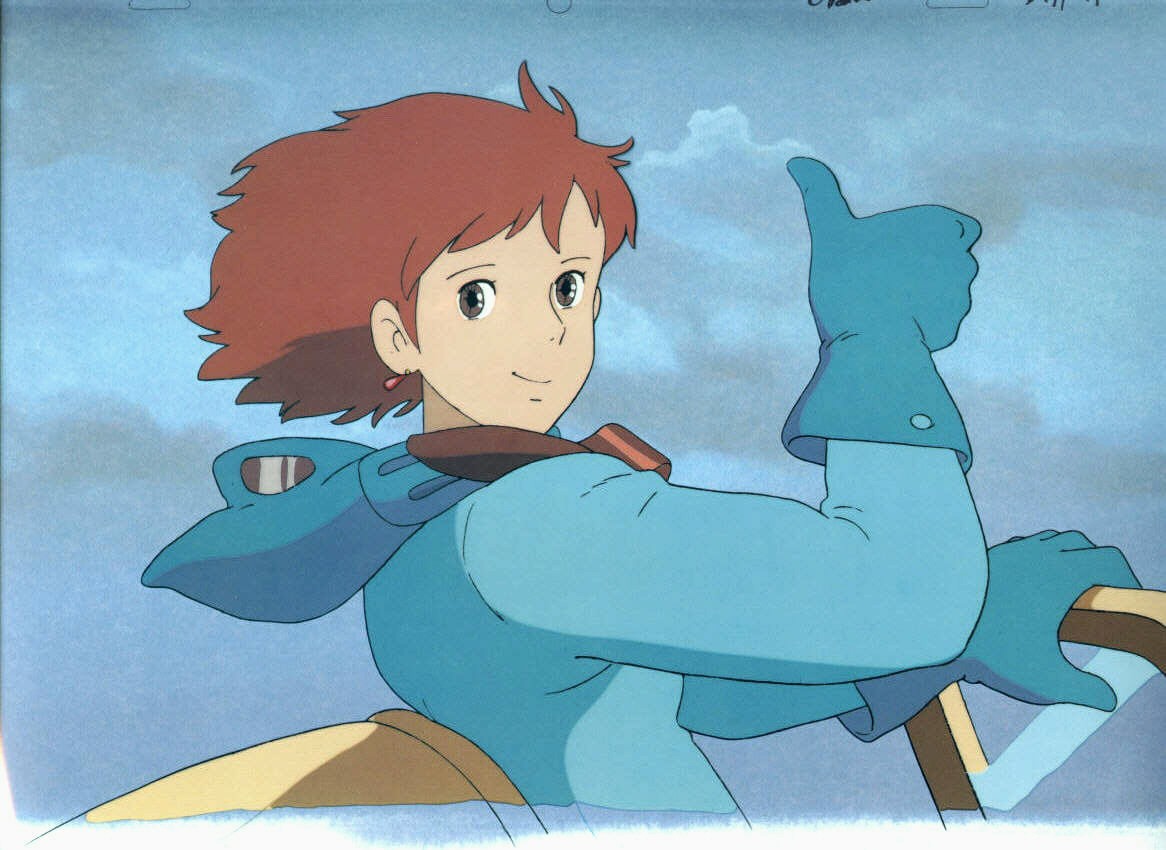As a Miyazaki fan, it is my sworn duty to occasionally post a review of a film by the greatest animated film maker ever. No, I do not consider that hyperbole. Today, it is on Nausicaa of the Valley of the Wind. Deal with it.
Some important facts to know about Nausicaa:
-She is a princess. Who flies. But she doesn't sing which is why she isn't a Disney princess.
-She lives in a poisoned world. Poisoned by us modern warmongers. Yeah, she lives in the future.
-She is a badass. She's not all sweetness and light. She can carry a machine gun twice her size with a wounded leg. When she really gets ticked off, she can kill a dozen men twice her size in a heartbeat. I guess that's another reason she's not a Disney princess.
-She is an environmental scientist. She not only creates a garden pure from the deadly radiation that makes nature become poisonous, she also figures out how nature was cleansing poison out of the earth on its own.
-She is a nature goddess. She can communicate with animals and they do what she says. Maybe she's really Dr. Doolittle in disguise.
-She does NOT go around naked without any pants. Her pants are flesh colored. That confuses and embarrasses a lot of men.
Nausicaa is Miyazaki's second feature film, and the first that begins using the themes that reflect his later films, among which are relationship between humanity and nature, flying machines, and war. It is based on a much longer, more complex manga written and drawn by Miyazaki.
Nausicaa takes place a thousand years after human war has poisoned the soil of earth to such a degree that poisoned jungles grew up, insects became gargantuan and huge protectors of nature were created-- Ohms. There are a number of human kingdoms, but the film deals with only three, Tolmekia-- a war-like kingdom that wants to rule the others; Pejite, the sworn enemies of Tolmekia; and the Valley of the Wind, a struggling utopia that gets caught up in the other kingdom's war.
Nausicaa herself is Miyazaki's saint-- the ultimate peacemaker. She is frankly an ideal Buddhist saint, who communes with all creatures, and seeks to make peace with all. She is especially focused on creating harmony between humanity and nature, trying to heal the 1000 year old rift. Throughout that thousand years, the poisoned jungles and humanity have been warring with each other, each attempting to overthrow the other's rule. Only Nausicaa realizes that humanity would perish without the jungle and that the jungle can flourish under humanity's enlightened guidance. Nausicaa is somehow able to understand the true nature of whatever she is facing. Instead of reacting to a threat, she responds to the fear behind the threat. Instead of seeing the death of the toxic jungle, she sees the beauty of it. She works with the nature of whatever is before her in order to create harmony with all creatures.
On the surface, this film seems weaker than other Miyazaki. Most Miyazaki are amazing in the detail of the world that was created for the film, and Nausicaa is no different in that. But the dialog is less rich and entertaining, the colors seem washed, and the style of animation is not as fluid as other Miyazaki films. Part of this, though not all, is due, I think because Miyazaki is trying to communicate the bleakness of the world in disharmony with nature. War-- both human and natural-- has taken its toll, draining life from everything. At the end of the film, the colors suddenly are brighter and everything changes.
Despite it's weaknesses (including a truly lame 80s score), this film is one of my favorites of all time. Despite it's bleakness, it is possibly the most joyful and optimistic of Miyazaki's films, and it plots out the general outline of hope for the future. Other Miyazaki films may communicate that war is bad and that bad guys aren't really all that bad, but this film actually lays out what would need to be done to end war, to change people's hearts. It isn't childish in any way, nor simplistic, if perhaps naive. It communicates that self sacrifice, listening to the another's heart, boldness for another's good and some basic reasoning can create a path out of the bleak world.
Perhaps I like this film because it is very much a religious philosophy I agree with. Perhaps it is because Nausicaa is such a strong character that to me she is the perfect moral hero. But with each time I watch it, the higher my estimation of it is.
The final important fact about Nausicaa is:
I may be secretly in love with her. You can go ahead and tell my wife. She already knows.



:) My next Miyazaki.
ReplyDeleteLovely write-up. I like Nausicaa a lot and don't think of it at all as being lesser Miyazaki; I don't quite get why others do. Nausicaa herself is a wonderful character, and I continue to be grateful to Miyazaki for making stories in which my daughters can see and identify with strong, complex female characters. Disney has its place but a world with only Disney princesses would be a sad one indeed.
ReplyDelete